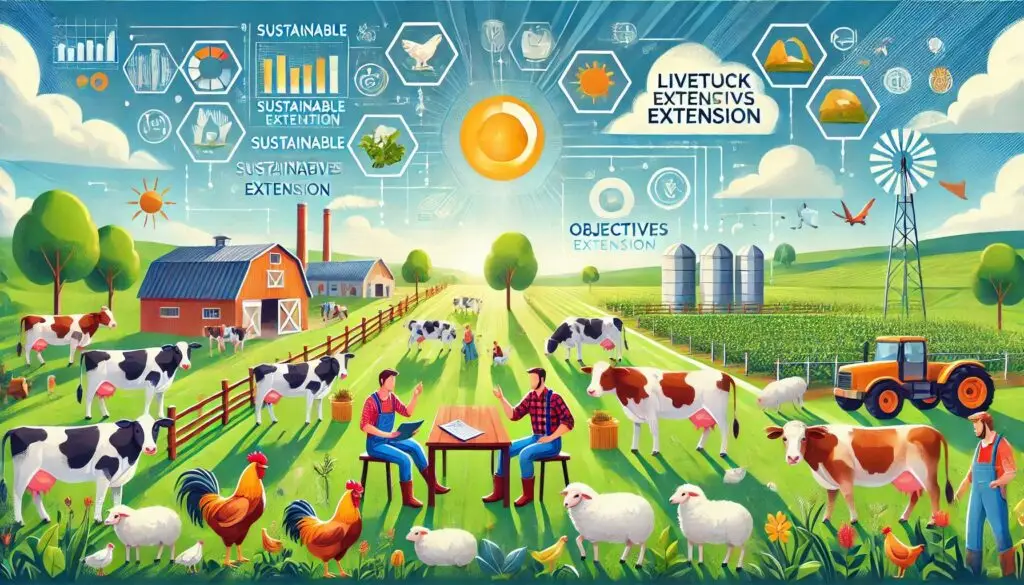Extension Teaching Methods

Introduction
Extension teaching methods play a crucial role in agricultural education. They help bridge the gap between research and practice. Understanding these methods can enhance the effectiveness of communication between extension workers and rural communities. This article explores the classification of extension teaching methods according to form: written, spoken, and audio-visual methods.
Classification of Extension Teaching Methods
1. Written Methods
Written methods are vital for disseminating information. They allow learners to access detailed content at their convenience. Here are some common types of written methods:
Bulletins
Bulletins provide in-depth information on specific topics. They are often published by agricultural universities or government agencies. For example, you can find valuable bulletins on sustainable farming practices at USDA National Agricultural Library.
Leaflets and Folders
Leaflets are concise documents that summarize key information. They are easy to distribute and read quickly. Organizations like FAO often create leaflets on various agricultural topics.
News Articles
News articles serve to inform the public about new developments in agriculture. They can be found in local newspapers or agricultural magazines. For instance, Agriculture.com regularly publishes articles on current trends in farming.
Personal and Circular Letters
Personal letters allow extension workers to communicate directly with farmers. Circular letters can address broader audiences, providing updates or invitations to events.
2. Spoken Methods
Spoken methods involve direct verbal communication. They foster interaction and allow for immediate feedback. Here are some key spoken methods:
General and Special Meetings
Meetings bring people together to discuss important topics. General meetings may cover broad subjects, while special meetings focus on specific issues. For example, local agricultural cooperatives often hold meetings to discuss crop management strategies.
Farm and Home Visits
Farm visits enable extension workers to provide personalized advice. These visits help identify specific problems in a farmer’s operation. You can learn more about effective home visits from resources like Extension.org.
Telephone Calls
Telephone calls offer quick communication for immediate assistance. They allow extension workers to address questions or concerns without needing a face-to-face meeting.
Official Calls
Official calls are scheduled visits that focus on particular issues or topics. These meetings can involve multiple stakeholders, including farmers, researchers, and policymakers.
3. Audio-Visual Methods
Audio-visual methods enhance learning through visual aids. They help demonstrate concepts effectively. Here are some common audio-visual methods:
Demonstration Posters
Posters visually represent key information or practices. They can be displayed at community events or workshops to attract attention and convey messages clearly.
Motion Pictures and Movies
Motion pictures provide engaging storytelling that illustrates agricultural practices. Organizations like National Geographic often produce documentaries that highlight innovative farming techniques.
Slides and Film Strips
Slides offer a structured way to present information visually. They can be used in presentations to accompany spoken explanations.
Models and Exhibits
Models represent physical concepts or practices that learners can observe and interact with. These hands-on experiences enhance understanding and retention.
Importance of Extension Teaching Methods
Extension teaching methods are essential for several reasons:
Enhancing Knowledge Transfer
Effective teaching methods facilitate the transfer of knowledge from experts to practitioners. This process is vital for improving agricultural practices.
Encouraging Participation
Spoken methods encourage participation from farmers and community members. Engaging discussions lead to better understanding and adoption of new techniques.
Catering to Diverse Learning Styles
Different individuals have varying learning preferences. By using a mix of written, spoken, and audio-visual methods, extension workers can cater to diverse audiences.
Building Relationships
Personal interactions through farm visits or meetings help build trust between extension workers and farmers. Strong relationships lead to better collaboration and support.
Challenges in Extension Teaching Methods
Despite their importance, extension teaching methods face several challenges:
Limited Resources
Many extension programs operate with limited budgets. This limitation affects the quality and quantity of materials available for training.
Resistance to Change
Some farmers may resist adopting new practices due to tradition or skepticism about new technologies.
Communication Barriers
Language differences or low literacy levels can hinder effective communication between extension workers and farmers.
Strategies for Effective Extension Teaching
To overcome these challenges, consider the following strategies:
Use Clear Language
Avoid jargon when communicating with farmers. Use simple language that is easy to understand.
Incorporate Technology
Utilize technology such as mobile apps or online platforms for delivering information efficiently.
Foster Community Involvement
Engage community leaders in the process of education. Their involvement can increase acceptance of new ideas among local farmers.
Evaluate Effectiveness
Regularly assess the impact of teaching methods on learning outcomes. This evaluation helps identify areas for improvement.
Conclusion
Understanding the classification of extension teaching methods according to form is crucial for effective agricultural education. By utilizing written, spoken, and audio-visual methods, extension workers can enhance communication with rural communities. This approach not only improves knowledge transfer but also fosters collaboration among stakeholders in agriculture.
More From Extension Education:





Responses